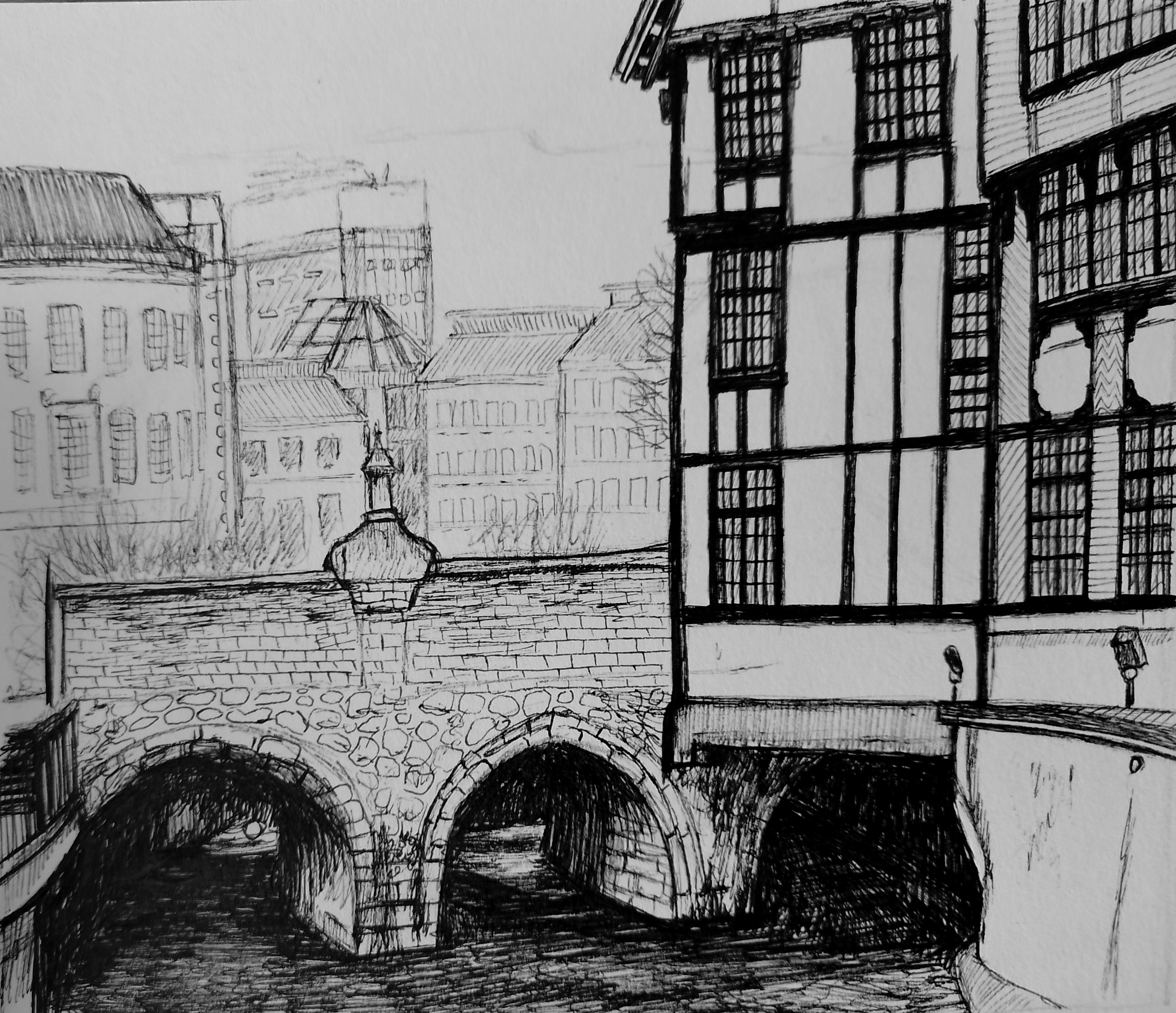Create an architectural illustration that shows the contrast between a building or structure of you choice and its surroundings.
This contrast may be the relationship between an old building and its more modern neighbour, its location, or perhaps the contrast is more embedded in its alterations and renovations. Alternatively you can choose a structure such a bridge or pylon to work from and explore the contrast with its surroundings.
Think about how you deal with this contrast creatively, through your choice of materials, approach to image and mark-making and use of colour and composition.
Pick somewhere that’s easy to access and draw. Use your sketchbooks to capture as much information as you can. When you get home either pick your best live drawing or use your notes, photographs and sketches to create something more finished. You may find that you didn’t captures much detail as you needed on your first visit, so you may want to return to get more information. Find out when your building or structure was built and do some research into the architectural style of building you have chosen.
Choosing a Building/Structure
I spent a long time trying to think of an appropriate building/structure, or more specifically how I could contrast it with its surroundings. There were other local options that I could have tried drawing without this consideration, but, for some reason, I found it challenging to find examples that fitted the criteria.
Eventually I resorted to searching for historical sites in Kingston upon Thames and I came across Clattern Bridge. I have walked over this bridge many times, but never paid it much attention. Through reading about the bridge from various sources online, I discovered that it is one of the oldest bridges in the country still in use and has a Grade 1 Listed Status. The original bridge was built over 1000 years ago during the Saxon times and was called Clatrung Bridge, referencing the sound of horses’ hooves as they crossed over it.
The current bridge was constructed in c1175 to replace the Saxon bridge and by the mid-16th century it became known as Clattering Bridge. The bridge has had several modifications since then, being widened twice in c1758 and 1852 (when the bridge was also renamed Clattern Bridge), but the original stone, medieval arches still remain in place.
Until the late 1800s, the bridge was used as one of the goals in an annual game of traditional football on Shrove Tuesday (with Kingston Bridge being the other goal). Until the authorities finally persuaded locals to move the game to a playing field due to to the violence and disruption it caused.
I was particularly interested in the use of the bridge for ‘ducking scolds’ using a cucking stool. I had not heard of this practice before, but it was the horrific method of punishment for women by which she would be tied to a chair connected to a contraption, which was then used to submerge her several times in the river for about half a minute at a time in front of baying crowds. This device was used as ‘punishment’ for women that ‘scolded, back-bited or gossiped’ and the victims were often put forward by their own husbands! It was also used for women that committed ‘sexual offences’ such as bearing an illegitimate child or prostitution.
The cucking stool was used in England until about the late 18th century, with the last known use in London in 1745 for landlady of The Queen’s Head pub in Kingston for discharging her customers and being disruptive. Clattern Bridge was the setting for this regular event and this knowledge certainly made me consider the bridge differently. I also thought about what must have been in the water when the women were dunked in it…
In terms of a contrast as required in the brief, I noted the contrast of the bridge with the more modern surroundings (the range of buildings dating from various periods in history), but also the contrast within bridge itself as there have been several additions/alterations made to it over the years, but it is still possible to see the original underlying structure from c1175.
Sketches and Photos
I visited the bridge and took some basic materials with me – pencils, pens and a selection of pastels, along with a small sketchbook. I went early in the morning so there it was not very busy, which suited me. I also took a few photos, some of which can be seen below.
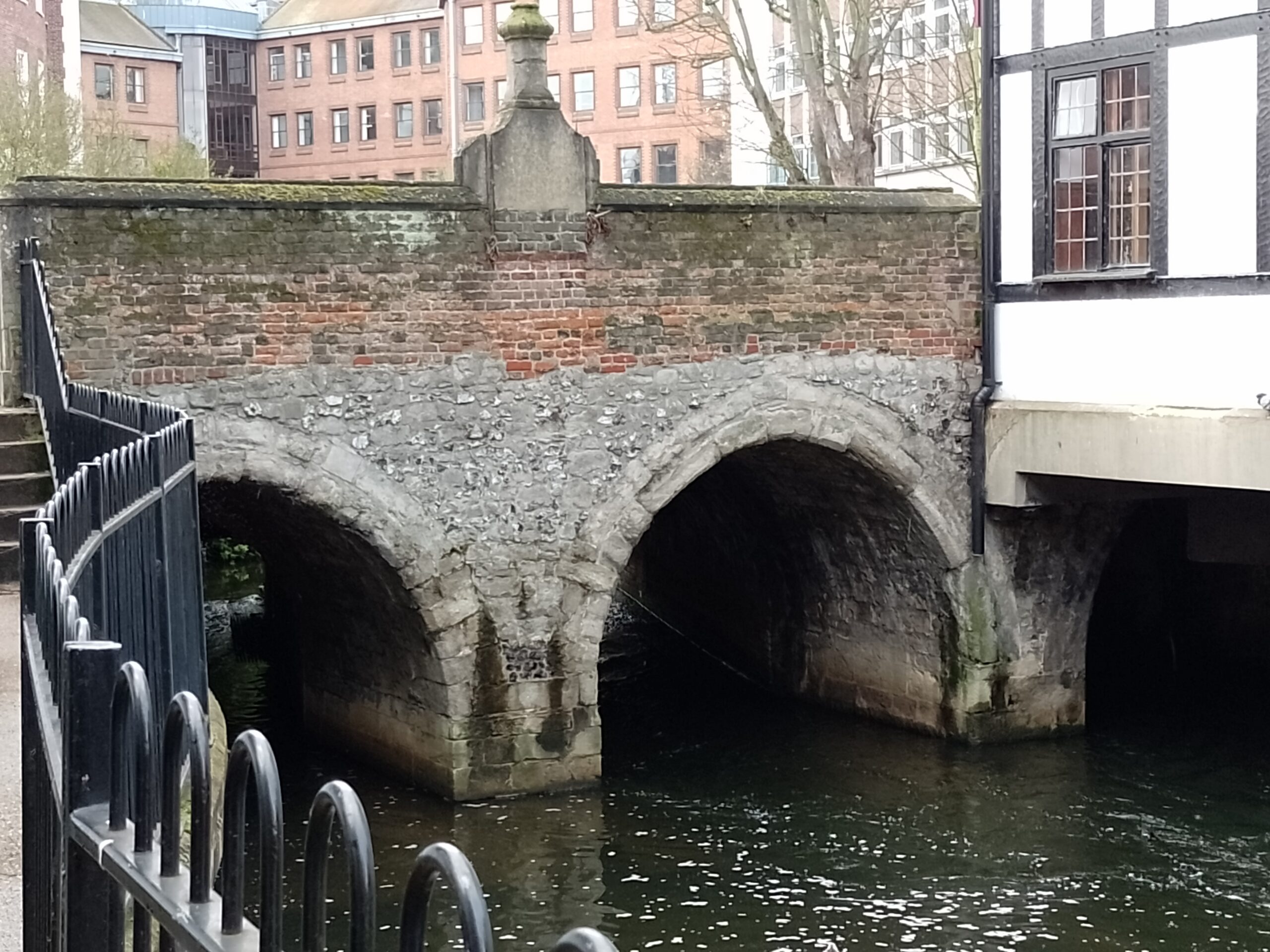
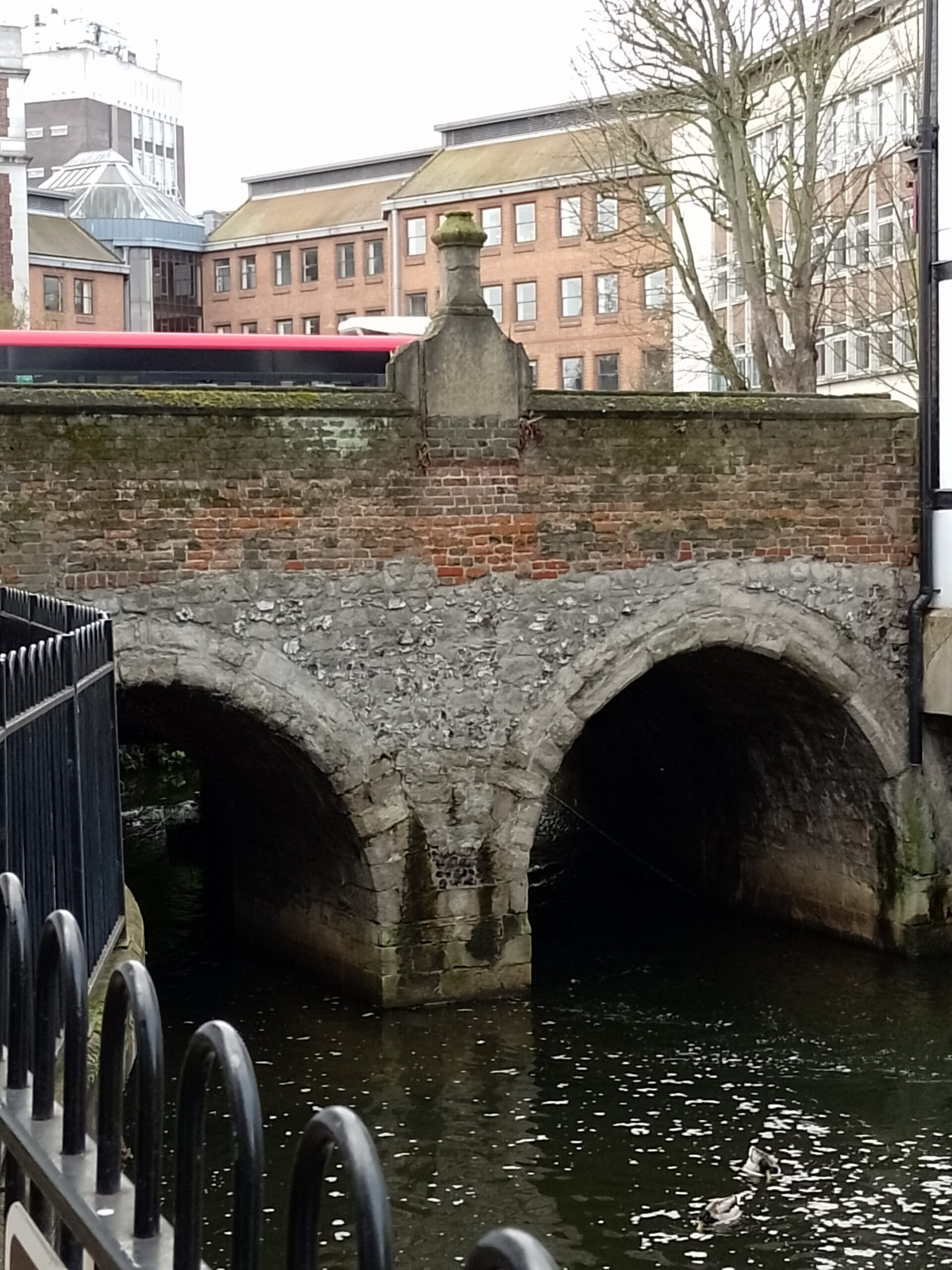
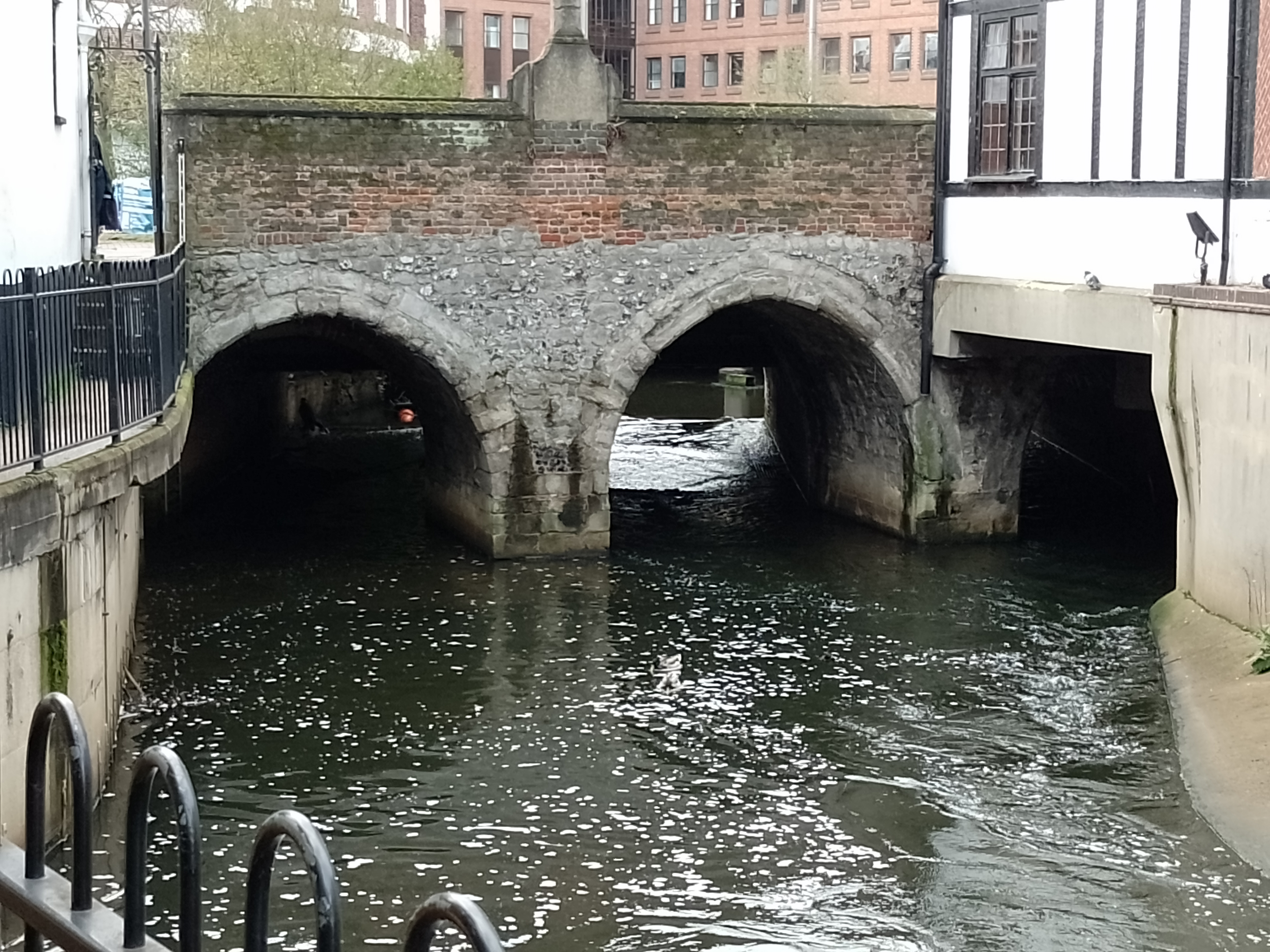
Having never attempted to draw architecture from life, I was unsure of how to begin or what to focus on. So I let out my initial frustrations in a quick line scribble using a pencil!
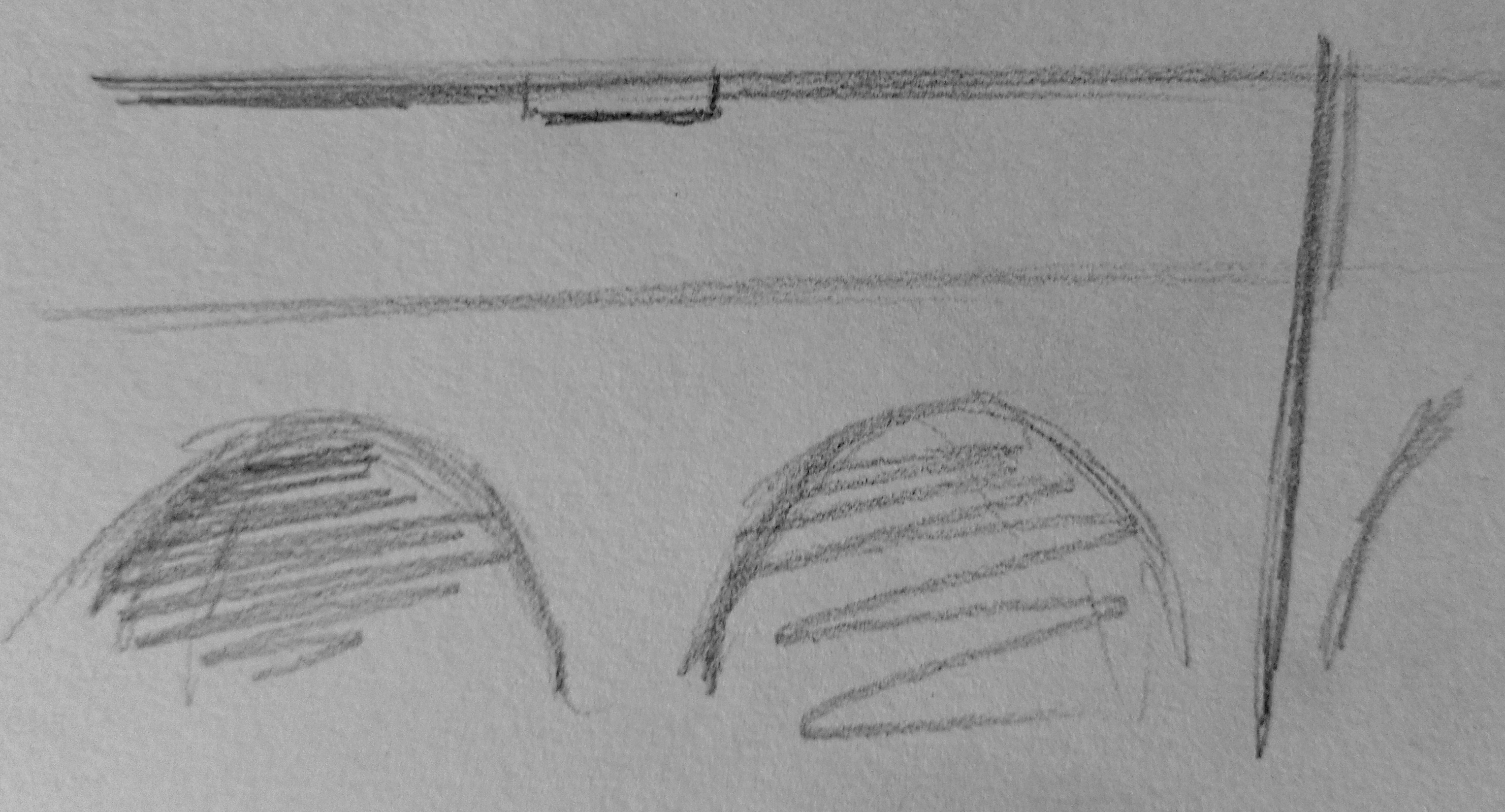
Afterwards, I felt a bit more relaxed and moved on to sketch a slightly more realistic depiction of the bridge. I did not focus on any background/surroundings at this point.
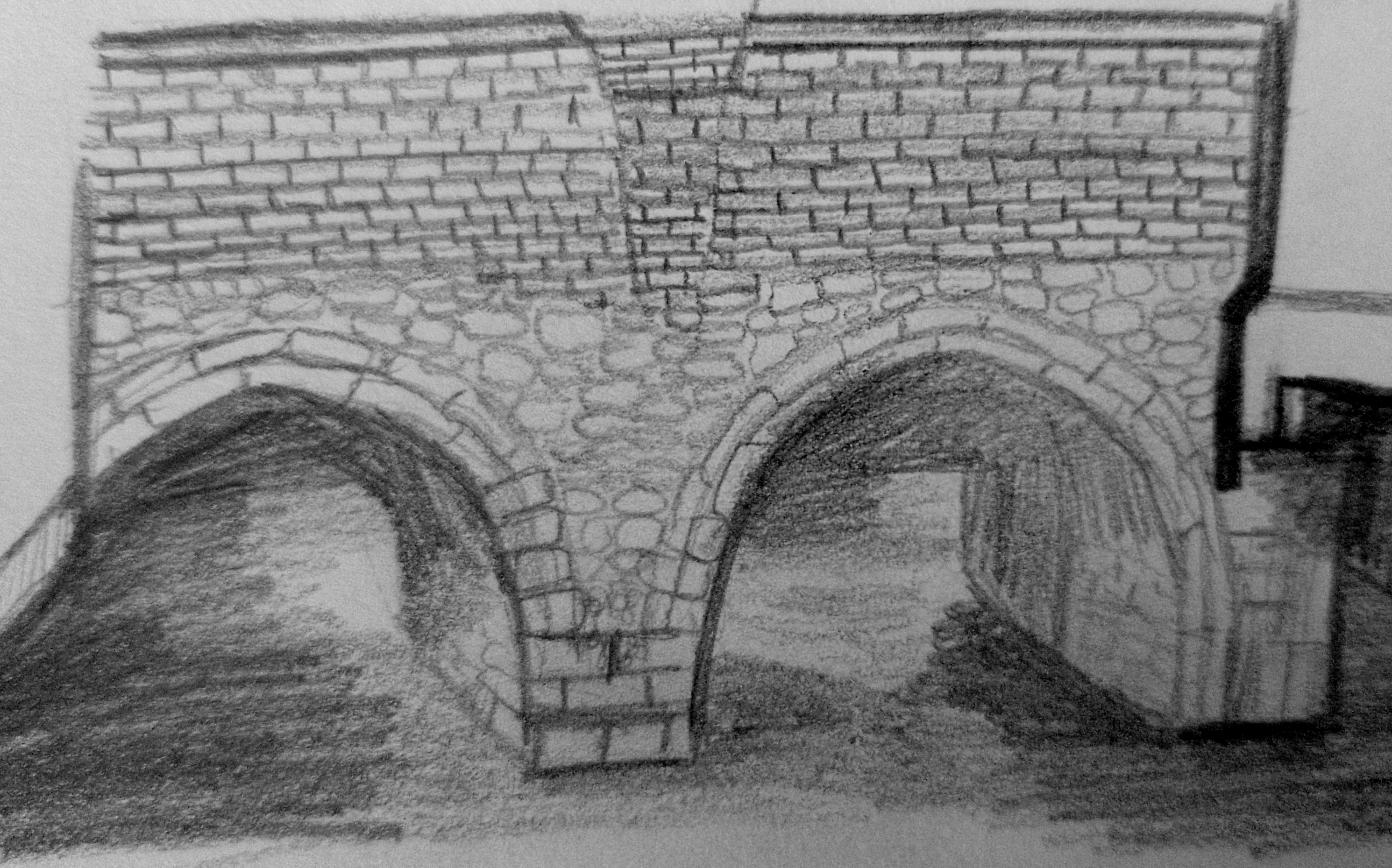
I then had a quick go using oil pastels, but the combination of the size of my sketchbook, the awkwardness of using the pastels standing up and feeling self-conscious meant that the result was pretty poor.
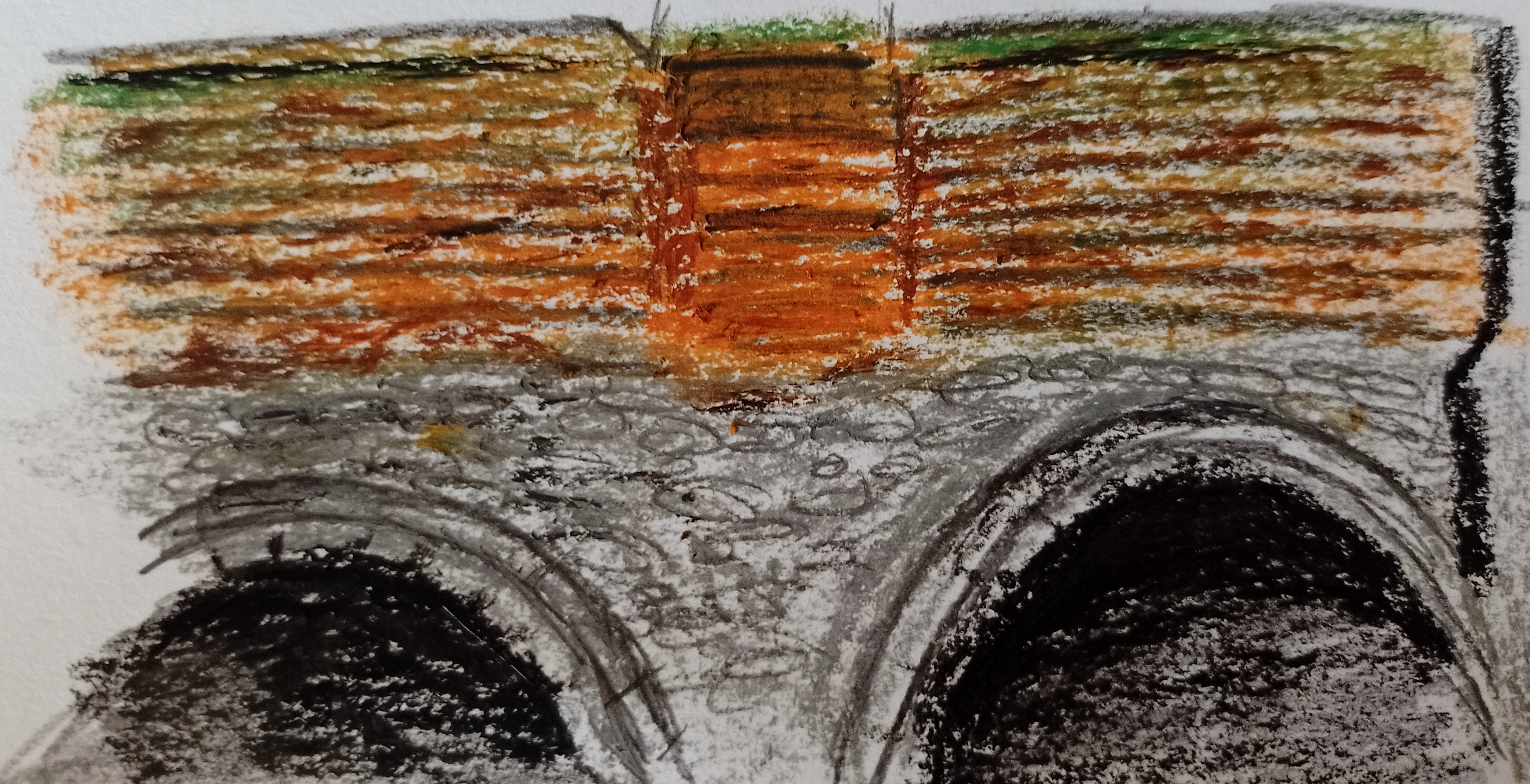
I really was not enjoying the task by this point, I just did not know what to focus on or what I should be getting from the experience. I decided to finish by using a 0.2 fineliner to draw a more detailed composition that included some of the background as well. I felt much more comfortable using the pen to draw light outlines of everything. When I returned home, I darkened the foreground using a 0.3 fineliner. I enjoyed this process and I was quite pleased with the result.
Although I was much happier with this drawing,I do not believe it indicates contrast as asked for in the brief. I was not sure of what I could do to rectify this issue. As the time spent thinking (and stressing) about this exercise was beginning to add up with no clear resolution, I decided to move on and perhaps I will return to it once I have received Tutor Feedback.
Final Thoughts
Despite the many challenges of this exercise, there were some positives I could take from it:
- Once I had decided on the structure I wanted to focus on, I thoroughly enjoyed the research process and finding out about the bridge’s history.
- I gained from the experience of visiting the bridge to draw from life and shooting my own reference photos. It would have been much easier to search online for images to work from, many of these were similar to my drawings/photos, but gathering my own primary sources of information was more satisfying and, most importantly, they belonged to me.
- I was reasonably happy with scale and perspective of fineliner drawing. I found myself becoming quite absorbed in the process of creating it and I think this shows in the final result.
In hindsight perhaps I was thinking about the contrast aspect too deeply? I could see it within the bridge itself, along with its history and the surroundings, I just could not think of how to show this creatively.
Bibliography
A Medieval Potpourri (n.d.) Clattern Bridge – A Medieval Bridge – Kingston upon Thames. Available at: https://sparkypus.com/2020/07/04/clattern-bridge-a-medieval-bridge-kingston-upon-thames/ (Accessed 31 January 2023)
British Listed Buildings (n.d.) Clattern Bridge, Kingston upon Thames, London. https://britishlistedbuildings.co.uk/101080064-clattern-bridge-grove-ward#.ZBWJpS-l2Zw (Accessed 31 January 2023).
Dancy-Downs, K. (2022) When Authorities Dunked Outspoken Women in Water. Available at: https://www.smithsonianmag.com/history/when-authorities-dunked-outspoken-women-in-water-180980428/ (Accessed 1 February 2023).
Diamond, D. (n.d.) The ducking of Mary Stemp, the landlady of the Queen’s Head in Kingston-upon-Thames. April 1745. Available at: http://www.davediamond.co.uk/ducking-stool.html (Accessed 1 February 2023).
Historic England (n.d.) Clattern Bridge, Non Civil Parish – 1002021. Available at: https://historicengland.org.uk/listing/the-list/list-entry/1002021?section=official-list-entry (Accessed 31 January 2023).
Kingston Council (2021) Culture In Kingston: Clattern Bridge. Available at: https://www.youtube.com/watch?v=Q6ilzdVZEtw (Accessed).
Kingston Trails (n.d.) Kingston Trails – Trails – Heritage Trails. Available at: http://www.kingstontrails.com/trails/heritage-trail/ Accessed 31 January 2023).
Wikipedia (n.d.) Clattern Bridge. Available at: https://en.wikipedia.org/wiki/Clattern_Bridge Accessed 31 January 2023).
Wikipedia (n.d.) Ducking stool. Available at: https://en.wikipedia.org/wiki/Ducking_stool (Accessed 1 February 2023).
